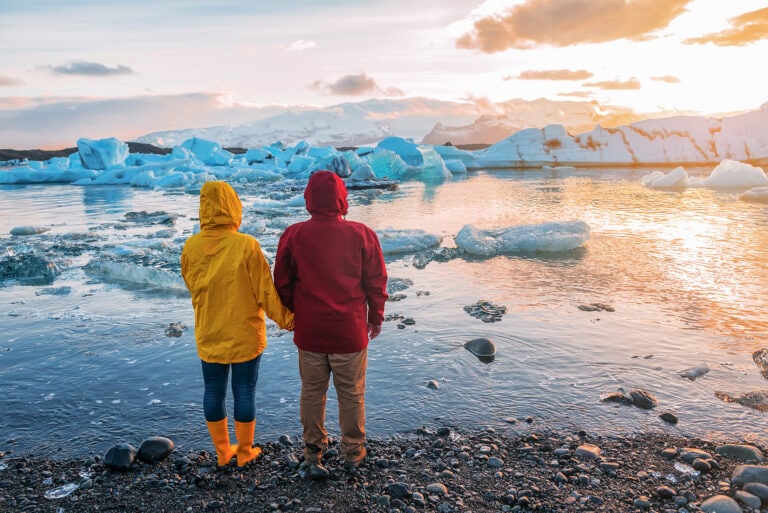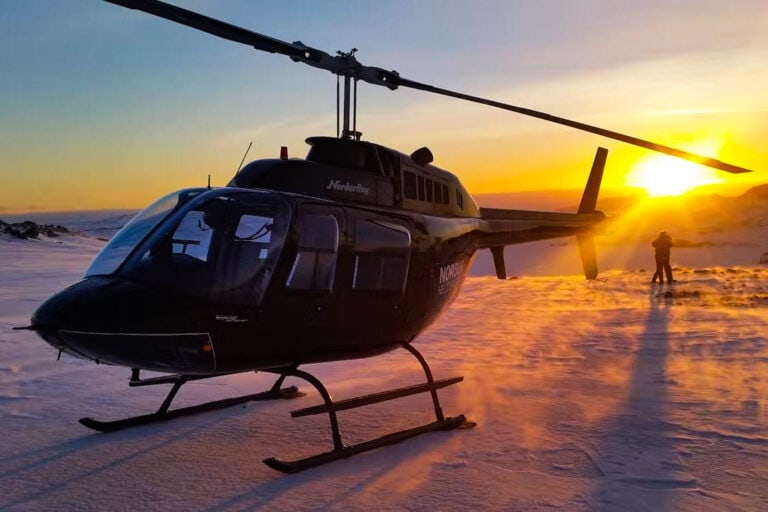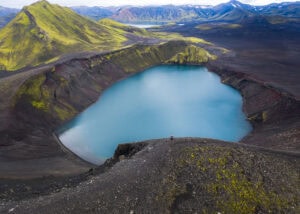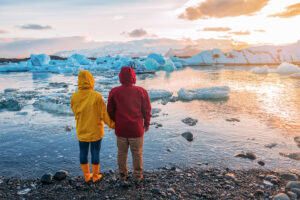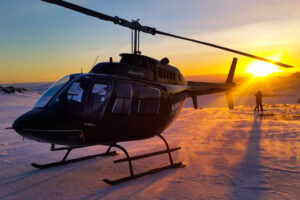Although a fairly small island nation, Iceland is packed with stunning natural beauty and exciting adventures.
Think of traveling through spectacular countryside to admire multi-level cascades, powerful geysers, bubbling pools, lava fields, and rugged cliffs. Over time, locals and visitors alike have created the perfect route around some of Iceland’s natural highlights: The Golden Circle. The looped route takes in many of Iceland’s best bits, for a memorable experience in the Land of Fire and Ice.
We’ve put together a comprehensive guide to help you on your exciting journey. You’ll find tons of recommendations and tips, covering famous attractions and thrilling activities, so you can really experience the best of Iceland.
- What is the Golden Circle?
- Map of the Golden Circle – Attractions and Detours
- How Long Does it Take to Drive the Golden Circle?
- Getting Around the Golden Circle
- When Should You visit the Golden Circle?
- Must-visit Attractions on the Golden Circle Route
- Other Recommended Attractions and Things to Do Near the Golden Circle
- Thingvallakirkja Church
- Gjabakkahellir Cave
- Silfra Fissure
- Laugarvatn Fontana Geothermal Baths
- Sólheimar Eco-Village
- Faxi Waterfall
- Kerid Crater
- Slakki Petting Zoo and Family Park
- The Secret Lagoon
- Helgufoss Waterfall
- Brúarfoss Waterfall
- Hvítá River and Drumbó Base Camp
- Fridheimar Tomato and Horse Farm
- Reykjadalur Valley
- The Historical Town of Skálholt
- Thorufoss Waterfall
- Efstidalur Farm
- Bobby Fischer Center
- Langjokull Glacier
- Thjorsardalur Valley
What is the Golden Circle?
Iceland’s Golden Circle is one of the most famous and most popular routes for tourists. The circle reference is because it follows a loop, although you may also hear it referred to as the Golden Triangle. This stems from the fact that the route encompasses three particularly gorgeous destinations. You can visit a regularly spouting geyser, a thundering waterfall, and a UNESCO-listed site.
If you’re wondering about the golden part of the Golden Circle, it’s not just because the area is full of natural treasures. It actually takes its name from one of the main waterfalls along the loop: Gullfoss. In the Icelandic tongue, the name Gullfoss translates as Golden Falls.
There’s another cool driving loop in northern Iceland with a similar name: the Diamond Circle.
Unique features and dramatic landscapes are abundant throughout the region, and hotspots are so close to each other that it’s perfectly possible to hit them all up in just a day. Not to mention the fact that it’s tough to find such an area of geological wonder elsewhere across the globe.
Almost all travelers to Iceland want to experience the marvels along the Golden Circle. Combining natural splendor, picturesque scenes, traditional cuisine, and friendly local hospitality, it’s no wonder that the route is so popular. Within easy reach of Reykjavik, the Golden Circle is an ideal day-trip destination from the capital.
Map of the Golden Circle – Attractions and Detours
How Long Does it Take to Drive the Golden Circle?
To simply drive the Golden Circle takes around four hours. This is, however, without stopping. The whole point of the loop is to experience a number of Iceland’s beautiful natural sites—so you would definitely want to plan at least a few stops and allot extra time to your adventure.
Many organized tours take a full day, around seven or eight hours, including a break for lunch. We would recommend you plan to spend the same amount of time exploring the Golden Circle, perhaps even longer if you have the independence and flexibility that comes with driving yourself.

Getting Around the Golden Circle
There are two main options for enjoying a trip around the Golden Circle: hiring a car or joining a private- or bus tour.
There are no public transport connections between the major attractions. Many are fairly remote, so it looks unlikely that this situation will change in the future.
In our opinion, driving yourself around the Golden Circle is the best way to fully enjoy your day. There’s no need for 4WD or any modified or specialized vehicles; you can explore the route in a regular 2WD car or campervan. Driving yourself gives you all the flexibility to tailor your day to your tastes. You can spend as much or as little time at places as you wish, break for lunch and restroom stops at any time, follow interesting detours, and really make the day what you want it to be.
Top tip: Although you should have no problem finding gas stations along the route, always begin your adventures with a full tank of gas.
If you don’t feel comfortable driving yourself around Iceland, or if you want to sit back and relax while somebody else does the driving, there are numerous Golden Circle tours to choose between. You can leave Reykjavik in the morning with a guide and hit the highlights before returning to the city in the evening.
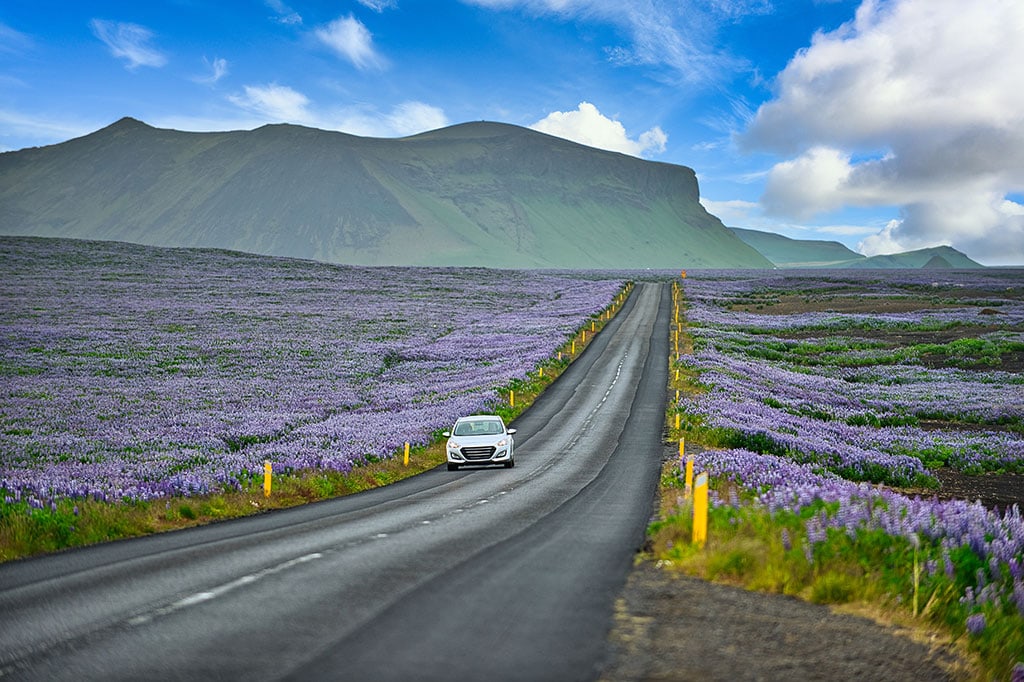
When Should You visit the Golden Circle?
You can visit Iceland at any time of the year, so the best time to visit the Golden Circle largely depends on your tastes and preferences.
In the summertime, you can enjoy longer hours of daylight and bright, sunny days. You can spend longer enjoying the sights without having to rush back to the city before darkness falls.
In the winter, you can enjoy the icy landscapes and might even spot the wondrous Northern Lights. Each time of year offers a different, but amazing, experience.

Must-visit Attractions on the Golden Circle Route
Thingvellir National Park
Assuming you start the Golden Circle loop traveling clockwise, you’ll come to the UNESCO World Heritage Site of Þingvellir National Park. Written in English as Thingvellir, it was the country’s first national park. It has cultural as well as geological significance.
The Althing, Iceland’s first parliament, was located at Thingvellir. The parliament first met here in the year 930 AD, some half a century after the country was first settled. Meetings took place during the warmer summer months with Icelandic people coming from all around the country.
Parliamentary sessions covered various matters, including judicial hearings and implementing legislation. The parliament played a huge role in shaping the cultural heritage that can be experienced in Iceland today.
Thingvellir was specifically chosen as the location for the Althing because it was fairly convenient to access from different parts of Iceland. Parliament continued to sit at Thingvellir up to the late 1790s.
Thingvellir isn’t just a special historic and cultural place though; it also has lots of fascinating geological aspects and nature.
The island of Iceland sits across two continental plates: the North American Plate and the Eurasian Plate. As the two plates gradually move away from each other, a gaping rift is created on the Earth’s surface. Thingvellir is in the rift valley, and visitors can not only see the huge cracks, but it’s also possible to go walking in the unusual fissures. Some areas have water, and it’s possible to snorkel and dive in the chasms.
Don’t miss visiting Oxararfoss waterfall while in the national park. The pretty cascade is around a 10-minute walk from the carpark. A number of walking trails lead through the park if you have longer to spend here.
You may recognize some spots as you explore, especially if you’re a Game of Thrones fan. Several scenes were filmed around the national park. See the Bloody Gate from Season 4, marking the path to the Eyrie. If you want to discover even more GOT locations, check out our Game of Thrones guide for Iceland.
There are no entry charges for Thingvellir National Park, though small parking charges apply if you’re driving yourself. With so much to see and do, plan to spend at least an hour (perhaps longer) at the national park.
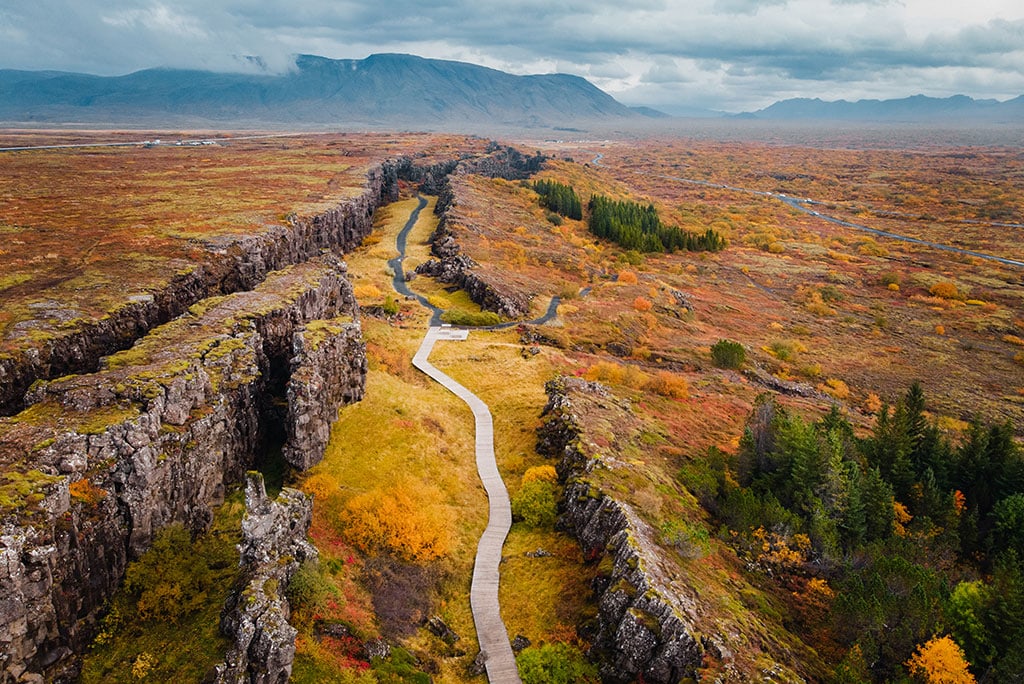
Geysir Geothermal Area
Continuing clockwise for about an hour from Thingvellir National Park, the next must-see attraction is Geysir Geothermal Area / Field.
The name Geysir means to gush, and it’s where the word geyser (a hot spring that sometimes spurts hot jets of water and steam) originates from. Indeed, the first written record of a geyser is the one at Geysir.
It’s no surprise, therefore, that you’ll find plenty of geothermal magic at Geysir Geothermal Area. There are hot springs, bubbling pools of heated water, warm mud pots, fissures that belch steam and gases (fumaroles), and, of course, geysers. You’ll find two of the most famous geysers in Iceland here, the namesake Geysir and the frequently erupting Strokkur.
Thought to have been erupting for some 10,000 years, Geysir is fairly inactive these days. If you are lucky enough to catch the famous geyser in action, though, you’re in for a real treat—boiling water shoots more than 120 meters into the air, surrounded by a cloud of steam.
Sitting close to Geysir is Strokkur, the area’s main star for most visitors today. Eruptions occur every five to ten minutes, with the reliable and frequent jets a marvelous sight to behold. Water and steam typically reach between 15 and 20 meters high, though they can sometimes be as high as 40 meters.
Do take care when exploring the area, as there’s lots of boiling water leaking from the ground in many places. Additionally, steam can be scalding too. Stick to the marked walking paths and don’t go beyond safety ropes; it’s for your own safety and wellbeing!
There are no charges to enter Geysir Geothermal Area, and there’s also free onsite parking.
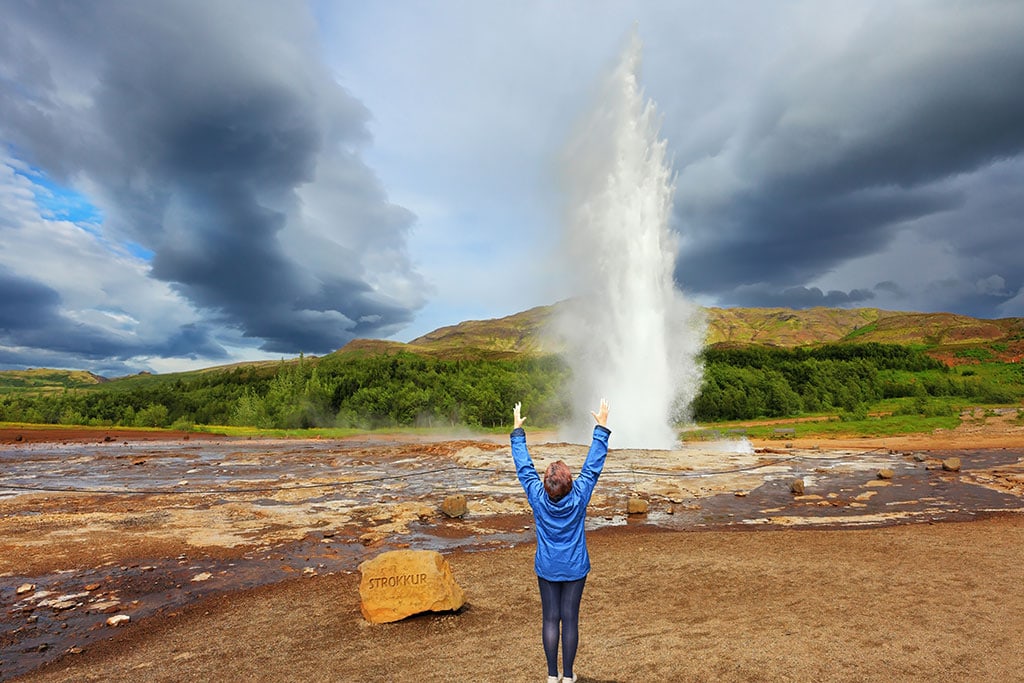
Gullfoss Waterfall
The third major destination along the Golden Circle is Gullfoss Waterfall (golden falls), the beautiful falls after which the Golden Circle is named. One of the most spectacular cascades in the whole country, it’s definitely worthy of a place on any Iceland bucket list.
Just a short drive of around ten minutes from Geysir, Gullfoss sits on the Hvítá River. The falls are split into two levels. The first tier is around 11 meters high, while the second level is almost twice as high, at around 21 meters. The two stages are broken by wide steps that completely cross the river’s width. Around 138,753 liters of water gushes over the immense falls every single second during the summer.
The falls are truly amazing when viewed from any vantage point. You can see the cascades from two main areas, with higher and lower observation points. Follow the steps that link the two main areas for different views. With more time to enjoy the mighty falls, you can also follow the river at the top of the waterfall for yet another perspective.
Gullfoss is spectacular at all times of the year. In the summer, the falls are surrounded by verdant foliage and you may catch rainbows sparkling in the spray. Over the winter, snow-covered landscapes engulf the falls for as far as the eye can see.
The site has a visitor center, cafe, and shop. There are two parking areas, one at the top of the falls and one at the bottom. There’s no charge to park and it’s free to visit the stunning waterfall.
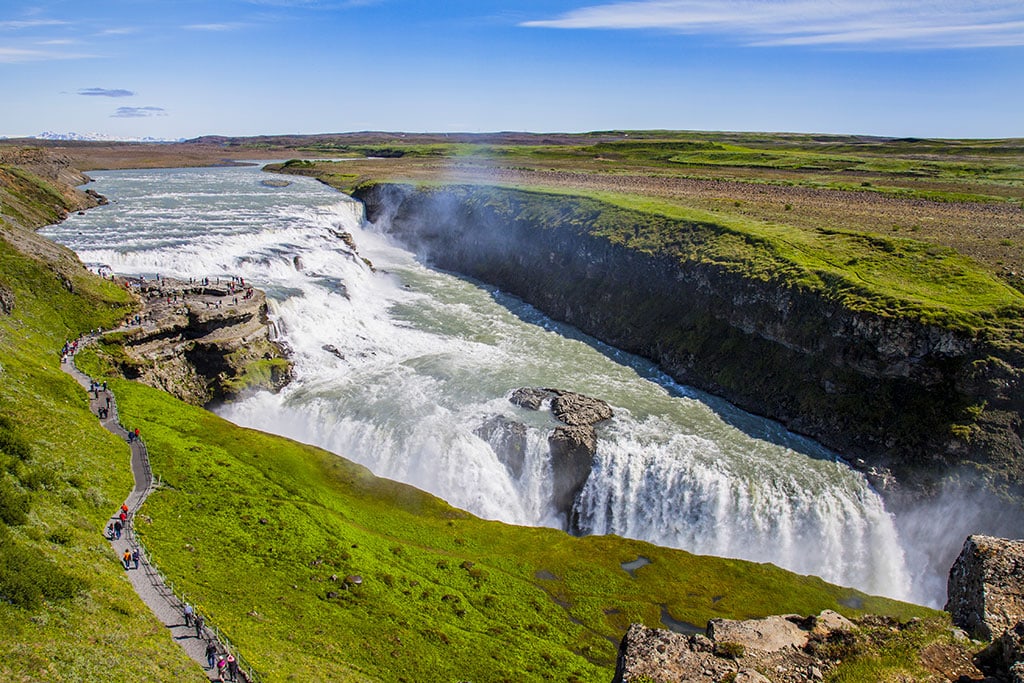
Other Recommended Attractions and Things to Do Near the Golden Circle
Thingvallakirkja Church
A church has stood at Thingvellir since Christianity arrived in the area. The present church dates back to 1859. It’s a quaint church with attractive interiors. Thingvallakirkja Church is open daily from 9 am to 5 am during the summer.
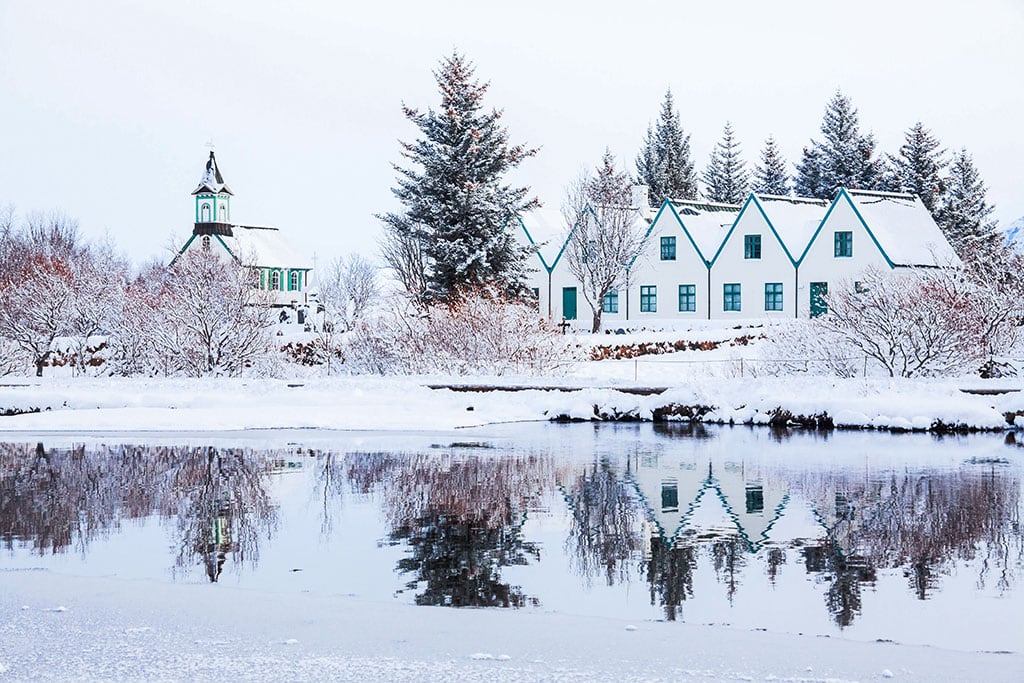
Gjabakkahellir Cave
Another attraction to add to your list if spending more time in Thingvellir National Park is the fascinating Gjabakkahellir. It’s a 364-meter-long lava tube that was created during a volcanic eruption around 9,000 years ago. You can enter the lava tube from either end, and it’s just a short walk from the road. An unusual sight, the lava tube is especially enchanting in the winter when ice sculptures form in the darkness.

Silfra Fissure
Silfra Fissure is a relatively new chasm between the North American and Eurasian continental plates. The fissure was formed after a large earthquake in the late 1780s. The gap in the Earth’s surface is filled with meltwater from one of Iceland’s biggest glaciers, Langjökull.
It takes around a century for the meltwater to travel 30 miles via a lava field to fill up the fissure. The water is, therefore, incredibly pure. It’s possible to see up to 100 meters under the clear water. Snorkeling and diving here is certainly unique and exciting.
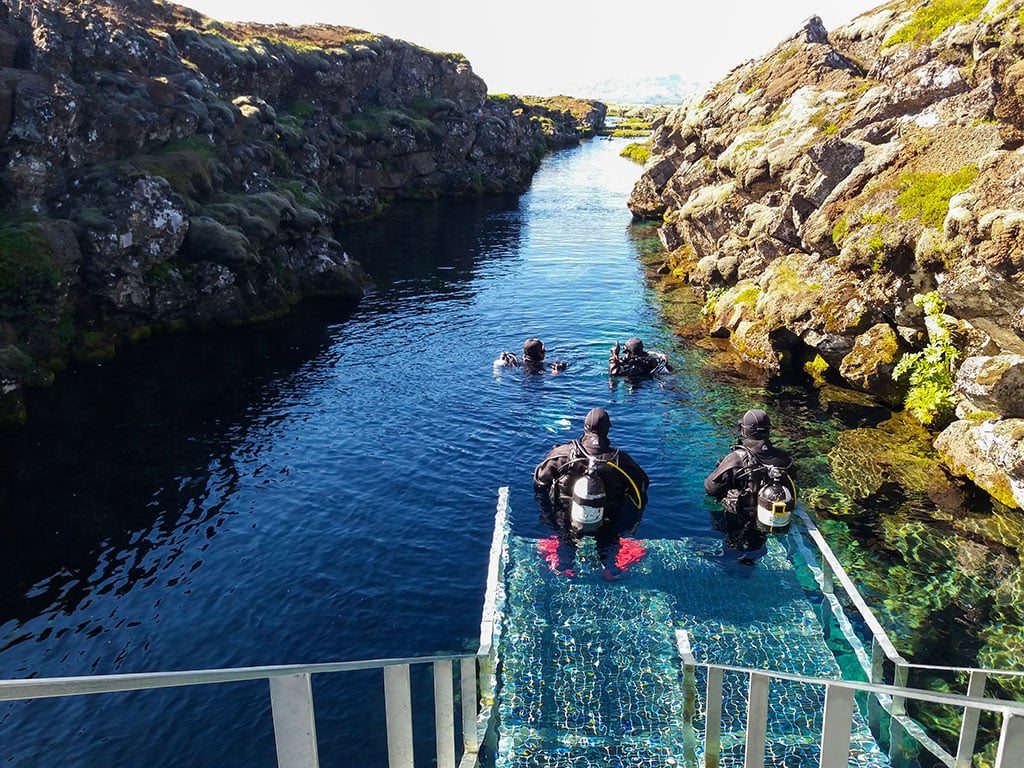
Laugarvatn Fontana Geothermal Baths
There are numerous geothermal springs and pools around Iceland, including the renowned Blue Lagoon near the capital to warm rivers and hot pools in various parts of the country. Many visitors dream of soaking in Iceland’s hot springs.
There are several places where you can relax in geothermal waters around the Golden Circle, including the popular Laugarvatn Fontana Geothermal Baths. The naturally warm water at Laugarvatn Fontana has been attracting visitors since 1929.
You can soak up the glorious lake vistas while bathing in relaxingly warm pools, soak in hot tubs, and rejuvenate in steam rooms and the sauna. You can also brace yourself and take a dip in the shimmering cold waters of the lake.
Don’t miss trying the local lava bread too. The facility bakes its own bread, taking around 24 hours from start to finish using geothermal heat. The time is well worth it, though, as the bread is super tasty!
This tour takes you around the essential sights of the Golden Circle and includes admission to Fontana spa: The Golden Circle & Fontana Wellness
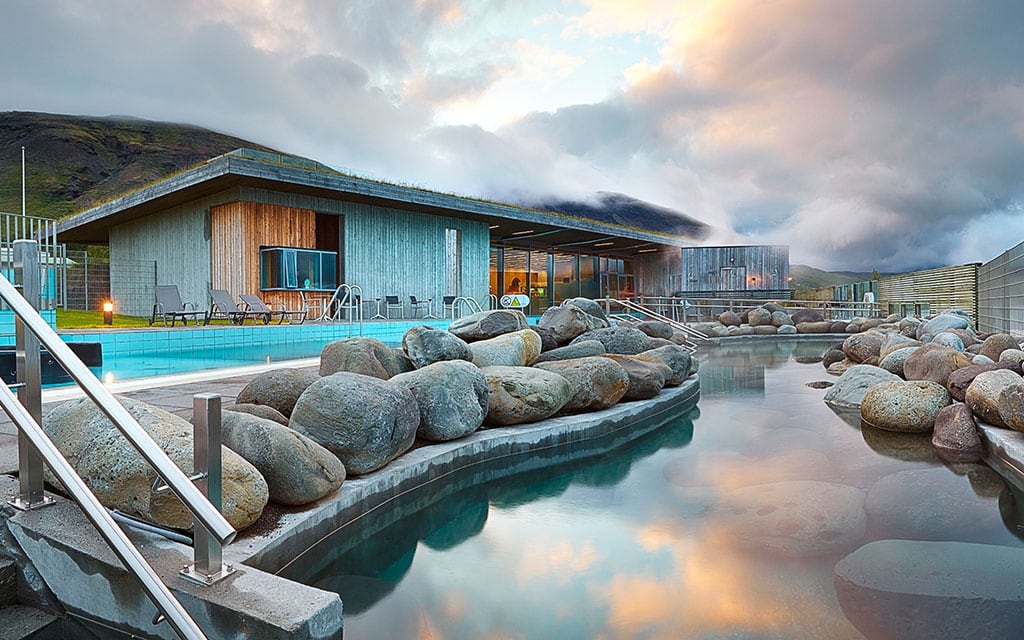
Sólheimar Eco-Village
Established in 1930, Sólheimar is the oldest eco-village in Europe. It’s also among the oldest such villages across the globe.
With a permanent community of around 100 people, the village was created using a combination of Christian teachings and the musing of Rudolf Steiner, a famous philosopher.
The unique sustainable village is one of Iceland’s biggest suppliers of organic produce. Pop into the cafe, situated inside a greenhouse heated by geothermal energy, for healthy refreshments. You can also pick up locally grown organic vegetables and delectable baked goods in the shop. The shop also sells terrific souvenir items, such as artisan wooden toys, handmade soaps and candles, pottery, arts, and crafts.
Visit the exhibition area to learn more about sustainable living and eco-friendly architecture. There are regular events, including art workshops, music recitals, sporting events, and informative lectures. The village is also home to a couple of guesthouses if you fancy experiencing the eco-lifestyle for longer.

Faxi Waterfall
Located on the Tungufljót River, Faxi Waterfall is sometimes said to be a mini version of the more famous Gullfoss Waterfall. Although the water only falls around seven meters in total, the waterfall’s main beauty is in its 80-meter width. The flow of water is said to be like that of Gullfoss, although Faxi definitely isn’t as thunderous!
Sometimes also known as Vatnsleysufoss, Faxi Waterfall’s name is thought to come from the Icelandic word fax, which is a horse’s mane. The cascades do seem to take on a flow rather like that of a mane as the horse gallops through the wind.
Peaceful and scenic, Faxi Waterfall has another interesting aspect; there’s a man-made ladder for fish at the side! The ladder was constructed to assist salmon when trying to swim upstream. The river is teeming with salmon and is a popular spot for fishing.

Kerid Crater
The stunning Kerid Crater is a common stop on Golden Circle day trips. Located close to Selfoss, just off Route 5, the beautiful caldera was created around 6,500 years ago.
The water-filled crater shimmers in the sunlight, the aquamarine waters contrasting perfectly with the colorful rocks around the edges. The rocks are hues of deep orange and red, with green and black streaks breaking up the fiery tones.
The oval shape of the crater creates wonderful acoustics, and a number of performers have held concerts in this magical place.
There’s a small charge to enjoy the crater, and there’s a car park close by.
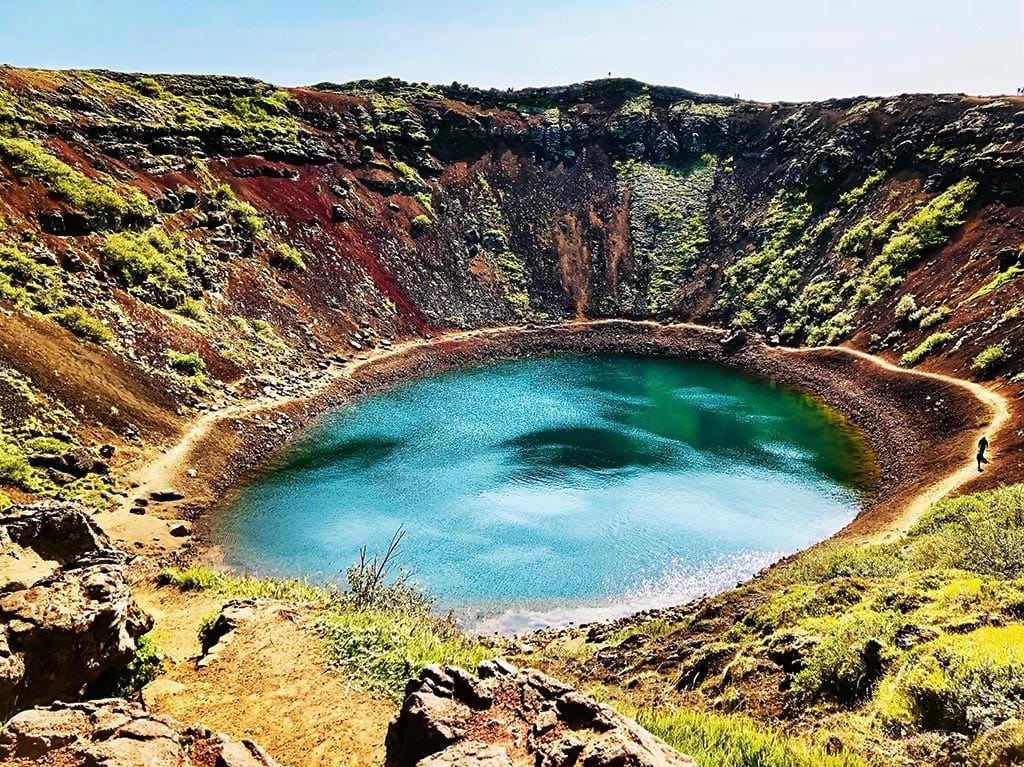
Slakki Petting Zoo and Family Park
A terrific family-friendly stop along the Golden Circle, Slakki Petting Zoo and Family Park has plenty to keep little ones happy. Come face to face with a range of small creatures, including rabbits, dogs, cats, cows, and sheep. There are fish in the aquariums and birdlife includes chickens, ducks, and geese. Call into the restaurant for a tasty meal, and escape the weather with a game of indoor mini-golf.

The Secret Lagoon
Located in Fludir, the Secret Lagoon is Iceland’s oldest swimming pool. Built in the early 1890s, it is known locally as Gamla Laugin. Filled by the nearby hot springs, the pool’s water maintains a pleasant year-round temperature of 38-40°C (100-104°F).
After a period of disrepair and disuse, the pool opened to the public again in 2014. Facilities include bathrooms, changing rooms, and a cafe.
Feel your cares simply drifting away as you unwind in the warm waters and enjoy the views. You can also follow the walking trail around the pool for great views of the geothermal landscapes.
The Secret Lagoon isn’t so secret these days and is rapidly growing in popularity among tourists. It’s highly recommended to book your tickets in advance to avoid disappointment.
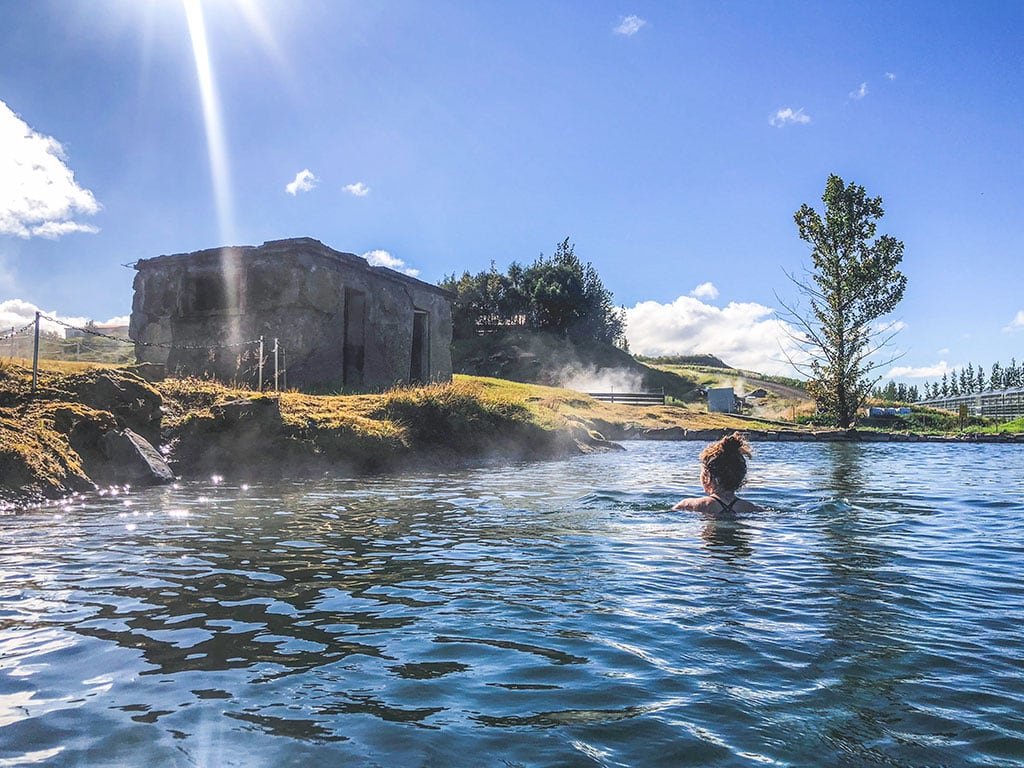
Helgufoss Waterfall
While Gullfoss Waterfall is the most famous waterfall around the Golden Circle, the route boasts a number of other superb falls too. Tucked away from the main road, these hidden jewels are well worth a stop when driving yourself around the loop.
Helgufoss Waterfall is one such cascading beauty. Situated in the Mosfellsdalur Valley, it lies just a short distance from Route 36 between Reykjavik and Thingvellir. Water tumbles 12 meters down a moss-covered cliff, with pastoral scenes stretching into the distance.
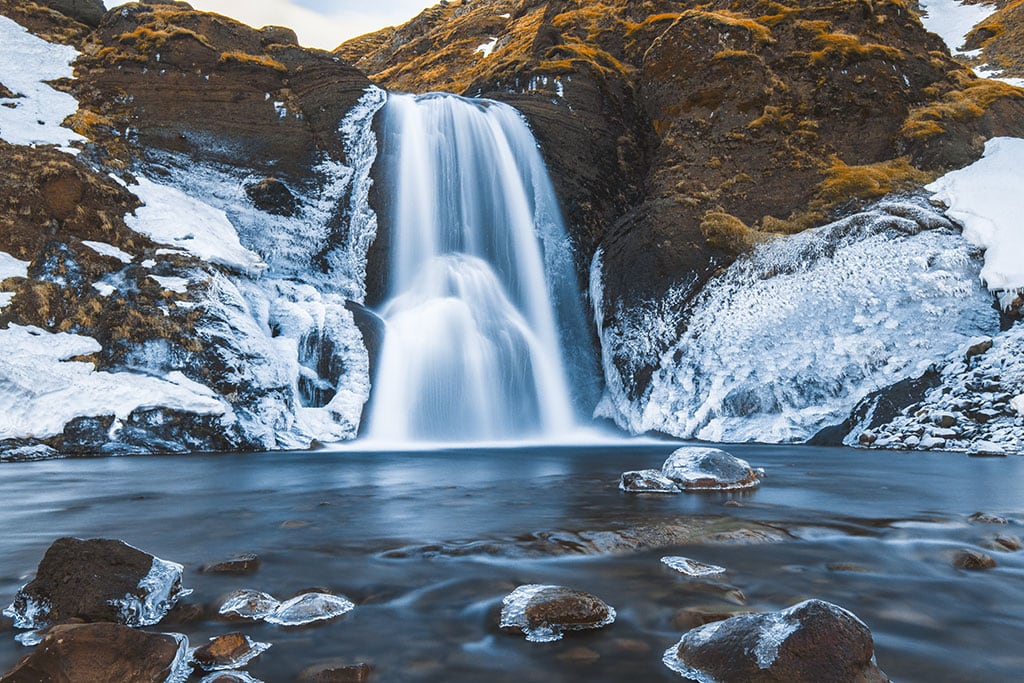
Brúarfoss Waterfall
This magnificent waterfall is like many other waterfalls in Iceland, something you should not miss. It is often called Iceland’s bluest waterfall. Brúarfoss is part of the Brúará river, which is composed of meltwater from Langjökull glacier. It runs wide above the waterfall and then the water falls into a narrow crack in the middle of the riverbed.
The waterfall is located between Geysir Geothermal Area and Laugarvatn on road no. 37.
The hiking trail starts from the carpark by the river and the distance to the waterfall is around 3 km one way. During this trail, you will also see two other beautiful waterfalls: Hlauptungufoss and Miðfoss .
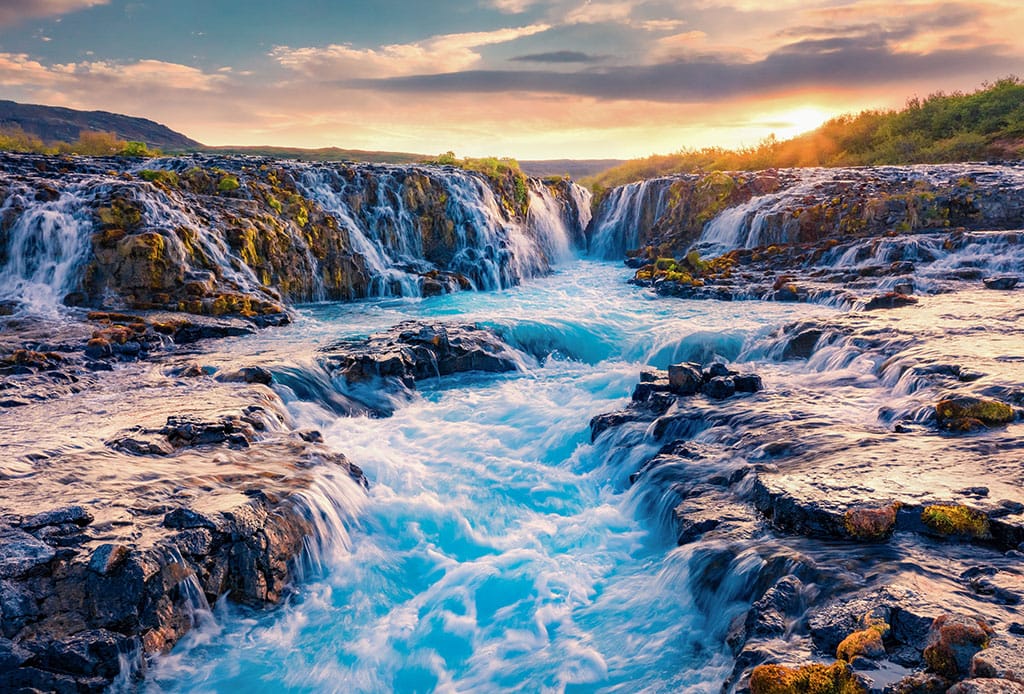
Hvítá River and Drumbó Base Camp
The Hvítá River is sourced from Hvítárvatn, a glacial lake created by meltwater from the large glacier of Langjökull. It is the Hvítá River that flows through Iceland’s famous Gullfoss Waterfall.
It’s one of the country’s most beloved rivers for rafting and tours by river jet, and locals often enjoy fishing for salmon in the beautiful milky-blue waters. River tours lead through eye-catching scenery, with soaring basalt columns and impressive rock formations surrounding the canyon.
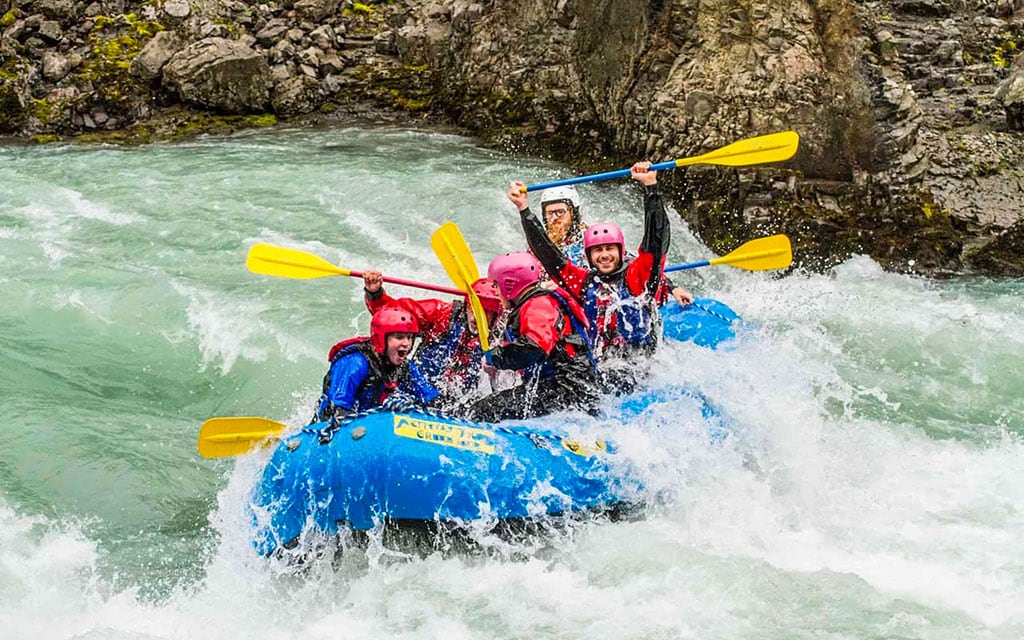
Fridheimar Tomato and Horse Farm
The family-operated Fridheimar Tomato and Horse Farm is situated around half an hour’s drive from Gullfoss Waterfall. Something of an unusual attraction in Iceland, tomatoes thrive in the greenhouses, with heat and light to replicate conditions in the Mediterranean region. It’s certainly rather strange to experience such a farm, especially when the weather outside is cold and wet.
The farm uses eco-friendly energy and modern technology, with naturally heated geothermal waters providing the necessary heat for the plants. Computerized climate-control systems monitor the temperature, lighting, humidity, and gas emissions inside the greenhouses to ensure the perfect growing conditions for the three varieties of tomatoes. The farm produces around 370 tons of tomatoes each year. Cucumbers are also grown here.
Learn more about the farm and taste the fruits of its labor in the restaurant. Set amid the plants in a toasty warm greenhouse, the eatery dishes up a variety of tomato-based dishes. From steaming bowls of tomato soup and mussels in a tomato seafood sauce to sweet treats like green tomato and apple pie and tomato-flavored ice cream, there’s something to suit any tomato-lover’s palate. You can even sip on tomato beer while dining!
Often a hit with younger visitors, the farm is also known for its horses. The farm breeds and shows horses, with several having proudly won first prize in events. Fridheimar Farm holds its own horse showing event each summer, called “A Meeting with the Icelandic Horse”. Attendees can learn all about the Icelandic horse, first brought to the island in the first century AD by early Scandinavian settlers.

Reykjadalur Valley
The picturesque Reykjadalur, AKA the Valley of Steam, is a geothermal area near to the southern town of Hveragerði. A warm river flows through the area, perfect for bathing. Hot springs feed the river with boiling water, which is then cooled with rainwater and glacial meltwater. The result is a river that varies in temperature depending on the location—move up or down the flow to find your ideal temperature before plunging in.
Reykjadalur is also a popular spot for summertime hiking. Colorful wildflowers and lush greenery fill the valley and hills, and the natural chemicals from underground stain the soil in striking shades of red, yellow, green, and blue.
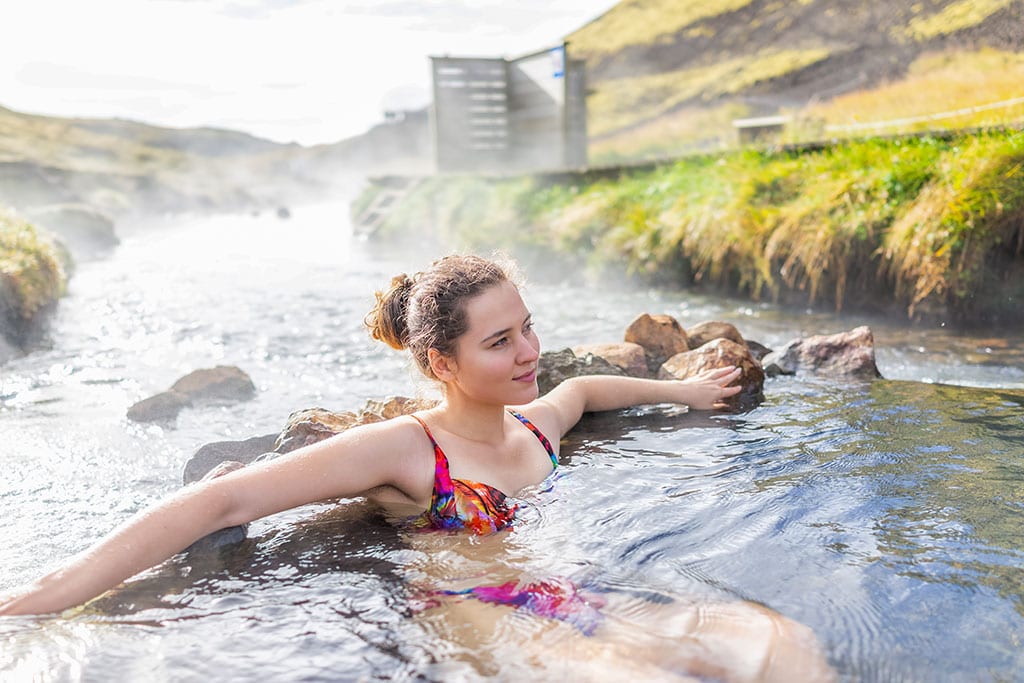
The Historical Town of Skálholt
During the medieval era, Skálholt was one of Iceland’s major towns. Between the 1050s and 1780s, it was a significant hub for political matters, education, religion, and culture. In times gone by, it was the largest town in the whole of Iceland.
In the past, the area was surrounded by farms, smithies, and workshops, and there was also a monastery. In 1056, Iceland’s first official school was created in Skálholt, set up to provide an education for the clergy.
Tourists visit Skálholt today to learn more about the town’s important history and heritage. Over the summer months of July and August, the cathedral hosts a weekend music festival.

Thorufoss Waterfall
Thurufoss Waterfall is another attractive waterfall on the Golden Circle. Located on the Laxá í Kjós River, water flows over a few rocks and steps before crashing down a larger cascade. The final drop is wide and the waterfall has a rather unusual shape. Surrounded by raw, natural scenery, the offbeat waterfall is certainly worth a quick detour and photo stop if you’re driving yourself along the Golden Circle route. Follow Road 48 after Helgufoss Waterfall to reach a small parking area, from where you can enjoy Thorufoss.
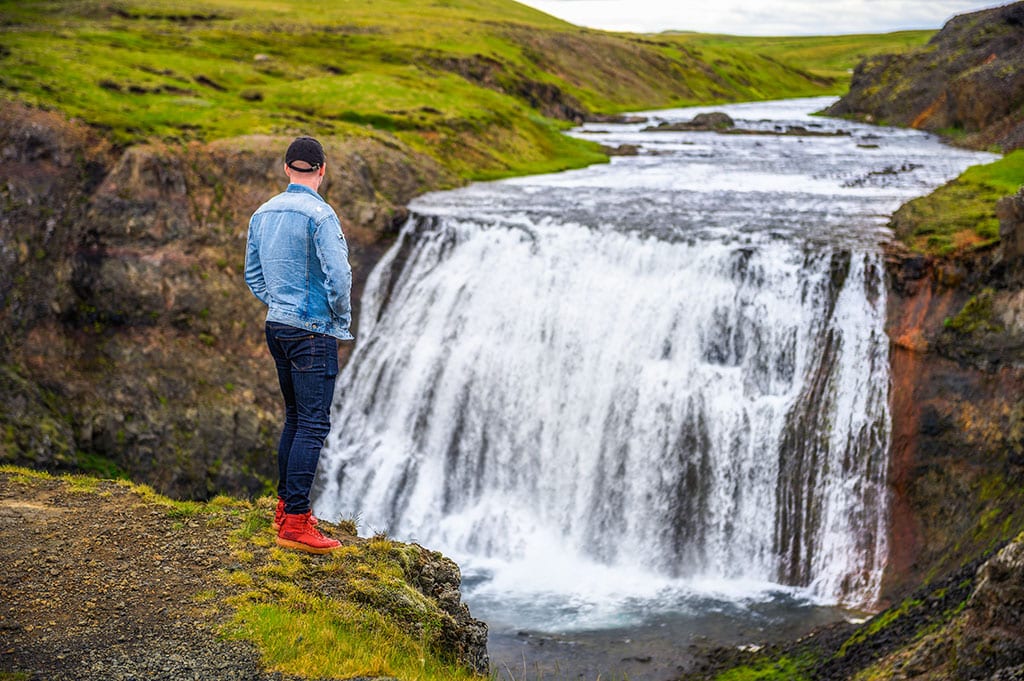
Efstidalur Farm
The family-run Efstidalur Farm is a great stopping place on the Golden Circle. See the farm’s dairy cows and enjoy ice cream made using milk from the quaint farm. The homemade organic ice creams come in a variety of flavors. There’s also a restaurant where you can savor fresh, local tastes if you want something more substantial.
Bobby Fischer Center
Situated in Selfoss, the Bobby Fischer Centre, known locally as Fischersetur, is one of just a few global museums in honor of a chess player. Learn all about the museum’s namesake—Bobby Fischer—who was a famous American chess player that spent three years living in Iceland.
In 1972, Bobby Fischer won the World Chess Championship. You can also visit the chess legend’s final resting place at the nearby Laugardaelir Church.
The museum opens from mid-May to mid-September. There’s a small admission cost.
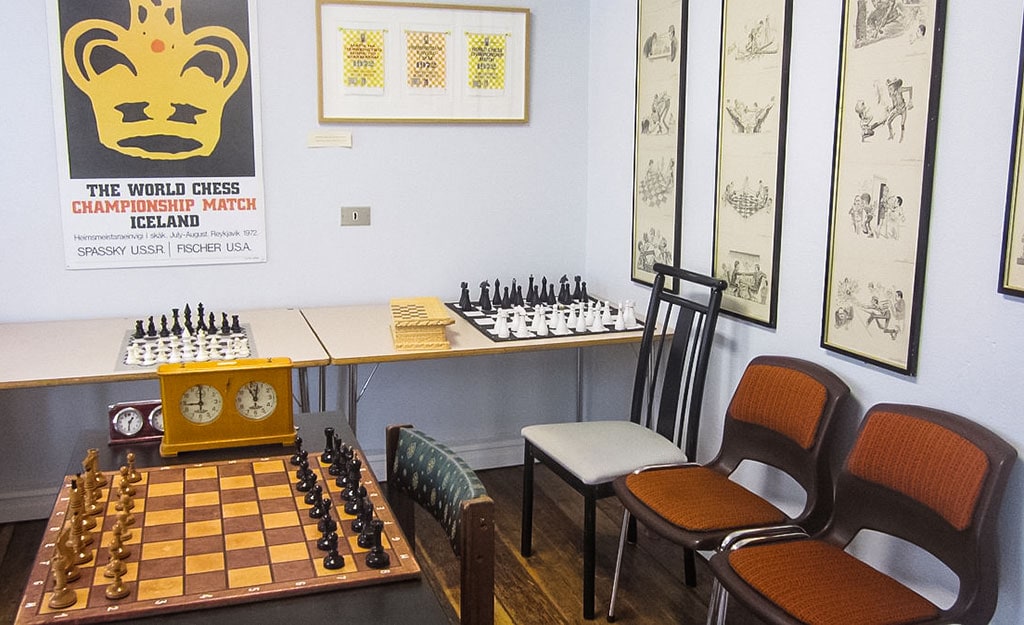
Langjokull Glacier
If you’re looking to combine a thrilling activity with your Golden Circle tour, try exciting snowmobiling at the dazzling Langjokull Glacier. On clear days, the sweeping views are incredible. There’s plenty of beauty to enjoy through the windows simply driving to the starting point too!
You can book a snowmobile tour on its own or add on a visit to a spectacular ice cave for even more adventure. Tour organizers collect participants from the nearby Gullfoss Waterfall.
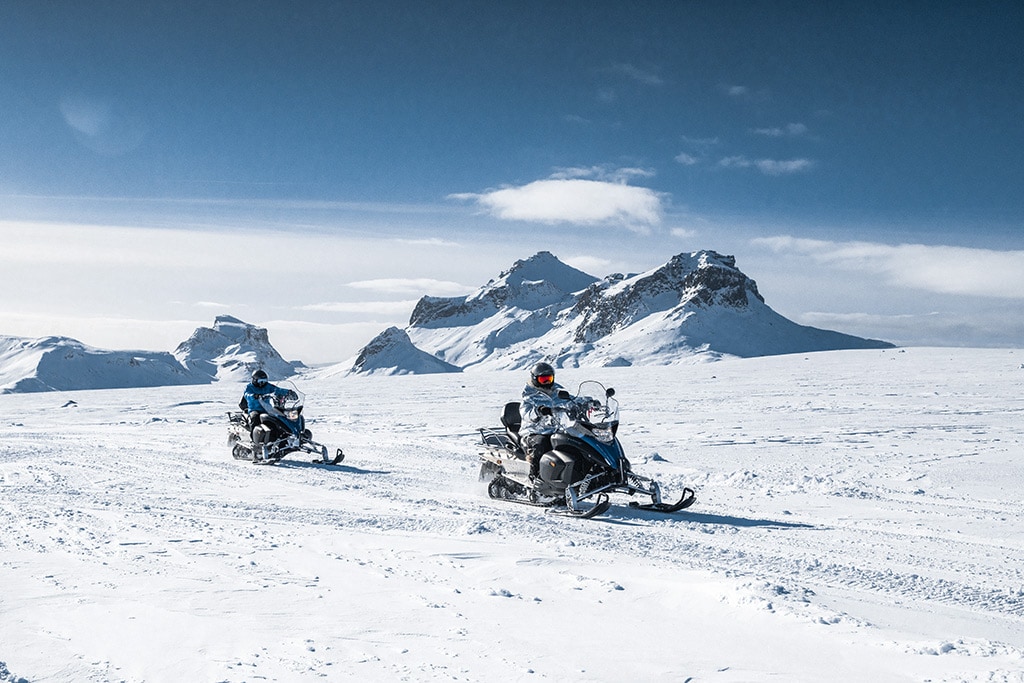
Thjorsardalur Valley
Fans of off-the-beaten-track explorations should consider taking a detour to the remote Thjorsardalur Valley. Part of the Southern Highlands, visiting the valley on your excursion will add on an extra couple of hours. With a myriad of stunning natural attractions, the extra drive is well worth it!
Marvel at superb waterfalls that see few visitors, and enjoy the tranquil ambiance far from the crowds. Haifoss, Hjalparfoss, and Granni are just a few of the splendid cascades to visit in the picturesque Thjorsardalur Valley.
You can also enjoy hiking in the expansive Burfells Wood, something of an Icelandic forest rarity for its large size. Spot an array of flora, such as vibrant wildflowers, verdant trees, and various species of grass and moss.

Which of these amazing spots would you love to visit for your holiday?
Get in touch with our travel experts to start planning your tailor-made vacation in Iceland.


